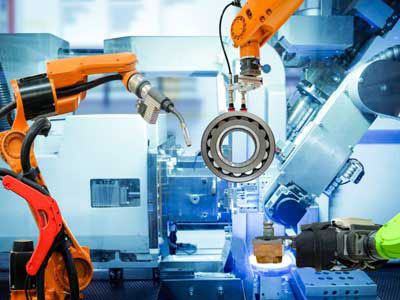Key Takeaway
Industrial robots are built using various materials to ensure durability and performance. Steel is commonly used for its strength and stability. Aluminium is lightweight and corrosion-resistant, making it ideal for robot arms. Cast iron provides a solid, heavy base for stability. Hard plastic components are used for flexibility and insulation. These materials combine to create robots that are strong, lightweight, and efficient, suitable for various industrial applications.
Metals and Alloys
Metals and alloys play crucial roles in industrial applications, offering a spectrum of properties tailored to diverse needs. From strength and durability in structural components to conductivity in electrical systems, their versatility is unmatched. Alloys, combining different metals, enhance specific characteristics like corrosion resistance or malleability, ideal for critical environments. Understanding their composition and applications ensures optimal selection for industrial processes, promoting efficiency and reliability across various sectors.

Plastics and Composites
Plastics and composites are crucial in enhancing the performance of industrial robots by reducing their overall weight. High-performance plastics like polycarbonate, ABS, and PTFE are favored for their exceptional strength, durability, and chemical resistance. These materials are typically used in housings, covers, and non-load-bearing components where robustness is essential. For instance, polycarbonate offers high impact resistance, making it ideal for protective casings, while PTFE provides excellent thermal stability.
Composites such as carbon fiber and fiberglass are also integral to modern robotics. Carbon fiber is incredibly strong and lightweight, making it perfect for robotic arms and other moving parts where weight reduction is critical. This material helps increase the speed and agility of robots, improving their efficiency. Fiberglass, known for its excellent insulation properties, is often used in protective enclosures and casings, providing a balance between strength and durability. The use of these advanced materials ensures that industrial robots can perform reliably under various conditions, enhancing their overall functionality.
Electronic Components
Electronic components are the heart of industrial robots, enabling precise and complex task performance. Microprocessors, sensors, actuators, and power supplies are essential elements. Microprocessors function as the robot’s brain, processing information and controlling movements with high precision. Sensors, including encoders and gyroscopes, provide critical feedback on the robot’s position, speed, and orientation, ensuring accurate operations.
Actuators, such as motors, servos, and solenoids, convert electrical signals into mechanical movement, enabling the robot to perform its tasks. Each type of actuator plays a specific role, contributing to the robot’s overall movement and control. Power supplies and batteries ensure a consistent flow of electricity, maintaining the robot’s operations smoothly. The reliability and precision of industrial robots heavily depend on the quality of these electronic components, making them indispensable in robotics.
Sensor Materials
Sensors are vital for industrial robots, allowing them to interact accurately with their environment. The materials used in sensors significantly affect their sensitivity, durability, and reliability. Silicon, quartz, and piezoelectric materials are commonly used in sensor construction. Silicon is favored for electronic sensors due to its excellent semiconductor properties, enabling precise measurements and control.
Quartz is used in resonators and oscillators, providing accurate frequency control essential for timing applications. Piezoelectric materials generate electrical charges in response to mechanical stress, making them ideal for force and pressure sensors. These materials ensure that sensors can detect minute changes and provide accurate feedback, which is crucial for high-precision tasks. The careful selection and use of these materials in sensors enhance the performance and reliability of industrial robots, making them capable of performing intricate and detailed tasks efficiently.
Innovations in Materials
The robotics field is continually evolving, with innovations in materials driving advancements in industrial robot performance. Advanced polymers and smart materials are at the forefront of these developments. These materials can change properties in response to environmental stimuli such as temperature, pressure, or electric fields, enabling the creation of adaptive and responsive robotic systems.
3D printing technology is another significant innovation, allowing the creation of complex geometries and custom components with optimized properties. This technology enables rapid prototyping and the production of parts with tailored mechanical and thermal characteristics, making it possible to design robots with specific functionalities and improved performance. These innovations in materials are paving the way for the next generation of industrial robots, making them more versatile, efficient, and capable of handling complex tasks. By leveraging these advanced materials, engineers can design robots that meet the growing demands of various industrial applications, ensuring improved productivity and efficiency.
Conclusion
Understanding the materials used in industrial robots is essential for engineers. Metals and alloys provide strength and durability, while plastics and composites reduce weight and enhance performance. Electronic components and sensors enable precise control and interaction with the environment. Innovations in materials are paving the way for more advanced and capable robots. By mastering these materials, engineers can contribute to the development of cutting-edge robotic systems that will shape the future of industry.
